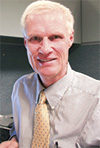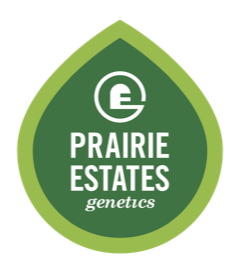I have been a public servant for 25 years. I began my career at Oregon State University in January 1990. I was 37 years old. I began writing for Progressive Dairyman in 1993.
In 2003, I began my career with USDA-NRCS, and I have had multiple duty stations with the USDA including postings in several foreign countries. As readers of this column know, I have reported on my lengthy tours overseas, including the last one in Egypt just 15 months ago.
During my time as a government employee, I have taken two paths. One is the pathway of dutiful performance. The other is the pathway of deep thought.
As you know, I have written many columns about dutiful performance. We may describe this as performing our work assignments to meet a mission. My time at Oregon State University, for instance, included an extension-outreach mission.
Extension faculty were expected to develop a program or programs that included transfer of knowledge to the field, in my case to dairy farmers. This is to transform some type of research into practical knowledge, and in my case it was a project on four dairy farms in the Willamette Valley that later became my doctoral research work as well as scholarly work, including newsletters and publications.
At USDA-NRCS, our mission is different, and I believe, more hierarchal. In the large sense, our mission is to implement Title II of the farm bill: the conservation title. The term implement in this case refers to delivering conservation planning that results in landowners participating in farm bill programs like the Environmental Quality Incentive Program or EQIP.
I am fortunate to have served overseas during my USDA career. I often state that the best years of my public service were the ones spent overseas, and specifically, the year I spent in civil affairs work in Afghanistan was profoundly meaningful to me.
However, it is the other pathway of deep thought that has been and continues to be the more meaningful part of my service. As readers of this column fully know, I often write of the art of this work, and my frustration with the automonic (my word to denote roteness with little creativity) nature of delivering our “deliverables” as they are called.
I am certain that as we age and move through our careers, our attitudes about our work change. I suggest that this is a function of deep thought and time spent thinking critically about our mission and how we as employees or public servants meet the objectives so the mission can be met, or accomplished.
One singular deep-thought model that has been part of my life for easily the last 20 years is the realm of writing and then delivering to landowners a performance-based conservation plan.
I have written about this approach countless times in this column, beginning with the foundation of using the web soil survey and then the four categories of history, baseline, planned and performance as attribute holders. This singular deep-thought model is based on two insights that I suggest are missing in our current model. One is simplicity, and the other is landowner participation.
I am suggesting that if we can use a simple model to accomplish something, then we are more apt to succeed in using that model in the real-world application of conservation. One clear example of this is the unity equation, defined as 1-A=R, where one is unity, A is abstraction and R is runoff.
Nearly all conservation planning work can be described using this simple equation. And it is not software-specific. It is conceptual, and the planner and landowner can work through the conservation issues using the relationship between A and R, albeit qualitatively and less so quantitatively.
Much of our software now requires an inordinate amount of information, and I think the user can adjust specific input parameters to get the answer they want. Many of our field assessment tools are in this category, although surely they have done some conservation good.
What is landowner participation? I have answered this question many times for many years. It is simply developing a conservation plan that helps the landowner make better decisions by improving efficiency, increasing economic gain and enhancing the environment.
This approach is far more than just meeting a program requirement. Landowner participation means, above all, that after the conservation plan is written and delivered, the landowner takes ownership of it – not in terms of meeting a program requirement but using it as a decision-making tool.
One great example is the DHIA program, which has resulted in huge gains in terms of milk production and animal genetics.
I am deeply grateful for having the time to enter into deep thought … to think about an issue or challenge or procedure in such a manner that we can suggest change and write about alternatives. Often, deep thought is altruistic.
We find a different approach that will benefit the greater good (the commons) so profoundly that once identified and honed, we are able to present it with the clarity of vision and the simplicity of understanding. Complex models do not do this. The very best scientists present a simple model that is completely free of software complexity.
I am sure about this. For many years, I have given this topic deep thought, and I arrive at the same point every time: the need for simplicity and the need for a conservation plan to do more than just meet a program requirement. Or as I often write or say, the very best conservation plan can be written with a pencil, a tablet and a calculator.
My point here is this. There can be two paths for a career. One is completing the necessary tasks assigned to us by a supervisor, thereby meeting our job performance criteria. The second one is less well-defined but from my perspective far more important.
And this is bringing creative ideas to our work through the use of deep thought. To see what others do not. To find simplicity in the form of an elegant model that requires conceptual understanding and is certainly not tied to or a function of a particular type or brand of software. And then to imagine the world as a place of outcomes and not just outputs.
This, then, is the entire realm of changing how we do conservation planning so that the landowner is empowered to use it to change behavior, to acknowledge the benefits of improving the efficiency, the economics and the environment.
Perhaps this approach is best described as the integration of art and science, of human thought and the mechanics of data, and the emotional realization that sometimes what was once used, is now lost.
I want to go back and use it again. PD

-
Mike Gangwer
- Agricultural Scientist
- USDA-NRCS
- Email Mike Gangwer





